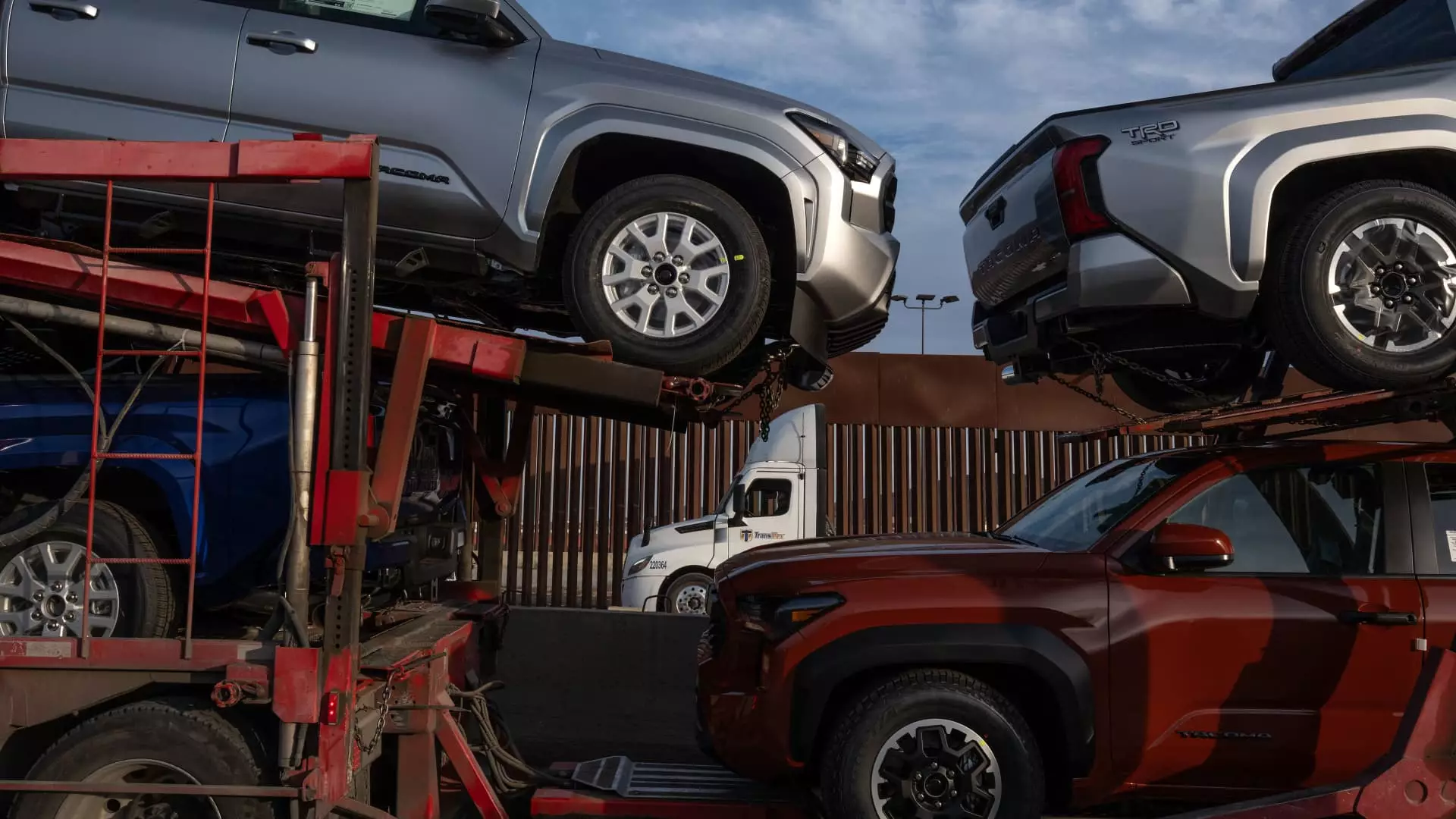As President Donald Trump’s administration braces for potential 25% tariffs on automotive imports from Canada and Mexico, the global automotive sector finds itself at a crossroads. For months, key industry players have adopted a “wait-and-see” approach, hesitating to commit to long-term strategies amidst swirling uncertainty over trade policies. Trump’s administration has hinted at enforcing tariffs since his inauguration, and despite not yet being implemented, the looming threat has prompted significant concern among manufacturers, particularly in the wake of President Trump’s stated desire to renegotiate trade agreements.
Automobile manufacturers yearn for a quick resolution to trade disputes that directly affect their operations. General Motors (GM), the largest automaker in the U.S., is particularly vulnerable. Without clarity on tariffs, companies are forced into a tight corner, needing to navigate unpredictable costs that could cascade into higher vehicle prices for consumers. This situation echoes broader economic implications, as any increase in vehicle prices could lead to diminished demand—an alarming prospect for companies reliant on stable consumer spending.
The potential imposition of tariffs is more than just a political maneuver; it poses a serious economic threat to automotive companies engaged in cross-border trade. The automotive supply chain is intricate, with manufacturers increasingly dependent on parts and labor from both Canada and Mexico. As per the International Trade Administration, about 86.9% of auto parts made in Mexico are shipped to the U.S., creating a deeply integrated network where changes in tariff policies can trigger monumental shifts.
Economists predict that significant tariffs could lead to increased operational costs for guilds that depend on parts from Mexico, ultimately resulting in heightened prices for consumers. According to analysis from Wells Fargo, the annual financial repercussions for prominent automakers could run into the billions. Estimates suggest that a tariff of 25% could add approximately $6,250 to the cost of a standard $25,000 vehicle, a figure that could be detrimental to already sensitive buyer behavior.
Market responses to this trade volatility have mirrored the uncertainty plaguing the industry. Recently, GM faced a significant drop in stock value, a startling revelation given that it had reported strong earnings and surpassed Wall Street’s expectations within the same period. Analysts, like Barclays’ Dan Levy, noted that while GM’s performance highlights a robust opportunity, the overarching concern is the unpredictable landscape of U.S. policy that automakers must now navigate.
The anxious sentiments expressed by investors underscore the pressing need for clarity surrounding trade policies. GM’s approach, as articulated by CFO Paul Jacobson, is a cautious one: while robust contingency plans are in place, the mere anticipation of tariffs has cast a pall over investor confidence. Jacobson openly admitted that recent market fluctuations have introduced noise to broader economic indicators, which further complicates strategic planning for the company.
In the broader context, it is noteworthy that virtually all automakers operating in the U.S. have strategic footholds in Mexico—where labor and manufacturing costs are generally lower. This model, which has facilitated competitive pricing and increased production capacity, now hangs in the balance due to potential tariff changes. According to S&P Global Mobility, nearly all automakers and suppliers active in North America could face detrimental impacts if sweeping tariffs were introduced.
The complexities of North American trade and manufacturing expose vulnerabilities, particularly for automakers like Volkswagen, Nissan, and Stellantis, which have significant portions of their U.S. sales contingent on production south of the border. As they await the Trump administration’s decisions, these companies are working on “what-if” scenarios designed to prepare for various outcomes, recognizing that proactive planning is imperative under such uncertainty.
The burgeoning tariff debate is emblematic of a larger existential challenge facing the automotive industry in North America. As companies strive for clarity amid the fog of trade policy uncertainty, the stakes remain high. With consumers watching closely, any changes in vehicle pricing and market dynamics could reshape the automotive landscape for years to come.
The tariffication policies, while promoting the notion of “America First,” could also unveil layers of complexity, underscoring the precarious balance between domestic manufacturing and the global supply chain. How automakers adapt to these changes will ultimately determine their long-term viability in an increasingly competitive landscape. Whether it leads to innovation and resilience or decline and disruption remains to be seen, but for now, the industry’s collective gaze remains fixed on the administration’s next move.

